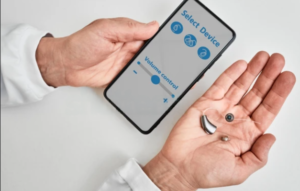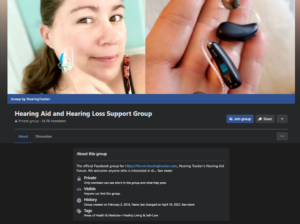How Modern Hearing Aids Are Changing Young Lives

Digital hearing aids aren’t just for older folks anymore. Believe it or not more and more young professionals aged 25-40 are jumping on the bandwagon in 2025. The old shame around needing hearing help has turned into a love for tech as these gadgets get smarter and more connected.
These days digital hearing aids work like high-tech earbuds. They hook up to smart devices, use AI to make sound better, and let you tweak settings through apps on your phone. Young adults are finding out that these devices don’t just help them chat better day-to-day. They also give them an edge when working from home, playing games, and networking for their jobs.
This guide looks into the reasons behind the growing popularity of hearing assistance tech among young professionals. It examines cutting-edge features, lifestyle perks, and practical factors that make digital hearing aids more attractive to younger users.
1. The Digital Revolution in Hearing Aid Technology
Digital hearing aids have seen incredible progress over the last ten years. These high-tech devices now offer capabilities that go well beyond just making sounds louder, which has a significant impact on how people use their hearing technology.
a. Smart device connectivity features

Bluetooth technology has an influence on how hearing aids connect to other devices. People who use hearing aids can now link them to their smartphones, tablets, and computers. This lets them stream audio straight to their hearing aids without extra gadgets. This smooth connection means wearers can hear phone calls in both ears while still being aware of what’s going on around them. Also, linking up with smart home tech allows hearing aids to connect right to things like doorbells and speakers in the house.
b. AI-powered sound optimization

These gadgets now use deep neural networks to check and process audio signals as they happen. What’s more, AI-powered hearing aids can pick up on what users like and tweak settings based on where they are. The tech can tell the difference between music and talking changing settings on its own for the best listening experience. As a result, these smart changes have made speech 20% easier to understand compared to when people pick settings themselves.
c. App-based customization options

New hearing aids come with advanced smartphone apps that give users direct control. Through these apps, people who wear hearing aids can:
- Change volume and sound settings
- Make and keep custom programs for different places
- Check battery life and how the device is doing
- Get help from hearing experts
The apps let you make quick subtle changes without touching the actual device. Also, some apps have GPS tracking to help find lost devices and saved settings for places you go to often. These options to customize make sure users have the best hearing in different places while managing their devices.
2. Today’s Lifestyle Factors Driving Use
Young professionals face new audio challenges in their daily lives. Remember, research predicts 2.45 billion people will have hearing loss by 2050, a 56.1% rise from 2019. This means digital hearing aids have become key tools to keep professional effectiveness and personal enjoyment.
a. Remote work audio demands

The move to remote work has shown how important clear audio communication is. Research shows that people with daily work activities gain a lot from hearing help when sound clarity affects their job performance. Remote mics paired with hearing aids work well during online meetings letting users hear speech from up to 30 feet away.
Because of this many young professionals find these devices crucial for:
- Taking part well in video calls
- Getting what teammates say in online group talks
- Keeping work ties strong through clear talks
- Getting used to different online meeting tools
b. Gaming and fun needs

In the same way, gaming and entertainment now need top-notch sound. New digital hearing aids work well with game systems offering special features to make games better. Young gamers who use hearing aids can tweak sound settings on their phones making custom sound profiles for different types of games.
Gaming has gotten much better thanks to direct sound streaming. Games that rely on sound, like shooters and action games, gain from exact sound cues sent right to hearing aids. This tech lets users:
- Pick up key game sounds
- Dive into rich game audio worlds
- Keep talks clear in team play
- Fine-tune game and chat volumes
These gadgets shine in other fun activities too. With Bluetooth, you can pipe music, podcasts, and more right into your hearing aids. This comes in handy when it’s noisy around you, and normal ways of listening might not cut it.
The rise of personal music players has led to hearing issues in younger folks. So, today’s hearing aids pack tech to cut down noise and let users tweak settings. This keeps sound crisp and clean across many types of media.
3. How Early Hearing Aid Use Can Boost Your Career

Communication plays a key role in career success. Research shows that hearing loss when left untreated, can have a big impact on how much money a person makes. Studies reveal that people with untreated hearing loss are 1.58 times more likely to have a low income and 1.98 times more likely to be unemployed than those with normal hearing.
a. How to improve communication at work

Digital hearing aids help people perform better at work by making sounds clearer. As a result, users say they understand clients and team members better during conversations. Instead of struggling to understand what’s being said, professionals who use hearing technology become more productive and engaged in their jobs.
b. Benefits for networking
When people can communicate better, they make more professional connections. Modern hearing aids allow users to do well in many networking situations by:
- Keeping talks clear in noisy places
- Picking up on soft voice hints during in-person chats
- Building stronger bonds through better talking
- Showing coworkers you can adapt to new tech
It’s worth mentioning that studies show 78% of people found out about their hearing problems from family members, which shows why it’s so important to get help to keep work relationships strong.
c. How well virtual meetings go

Online meetings create their own sound problems, but newer hearing aids are designed to solve them. Studies show that hearing aid users perform much better in virtual meetings. These devices come with special features that make online conversations easier:
Audio streaming capabilities provide high-quality sound in video calls, while noise-canceling technology blocks out distracting noises. Users often feel more comfortable to speak up and understand meeting topics better.
Research shows that working-age people who use hearing aids tend to stick with them more than older folks do because of job requirements. Young professionals in particular report improved results after using hearing aids for one month and eight months, the perks of the job go beyond just better communication. Research indicates that hearing aid users have higher job satisfaction and improved career prospects. However, to reap these rewards, it’s crucial to begin and continue using them allowing professionals to maintain their edge throughout their careers.
4. How Social Media Shapes Opinions on Hearing Aids

Social media has an influence on people’s perception of digital hearing aids, with 58% of users reporting positive shifts in attitudes towards the stigma. Online influencers and internet support communities have brought about this change.
a. Influencer Support

Social media stars with hearing loss are emerging as powerful advocates for the widespread adoption of hearing aids. Mason Branstrator best known for his advocacy work, demonstrates how digital hearing devices enable an active lifestyle. He connects with his online audience as his following expands. Other individuals find inspiration as he shares resources and personal stories of overcoming hearing challenges.
Deaf or hard-of-hearing social influencers spread their message to millions through various online platforms. This outreach does more than raise awareness; it shapes conversations about hearing health. Thanks to their efforts, a remarkable 82% of people report that addressing the significant stigma has improved their daily life.
Mixing their own experiences, these influencers give out useful advice and support. They talk about everything from reviewing gadgets to life tips starting bigger talks about hearing aids. On their channels, they show how cool new hearing devices fit into busy active lives.
b. Online support networks

The internet has created very active hearing aid groups where people share stories and advice. Facebook groups work like forums giving current and potential users a place to find comfort and real help. In these groups, you can find:
- Tips to keep your equipment in good shape and working well
- Someone to chat with who understands your situation
- Info on training and the latest tech news
- Chances to connect with healthcare professionals
Research indicates 30% of Facebook groups focus on offering advice and support. , 20% aim to share information. Twitter and Facebook pages serve as the primary platforms for people with hearing problems to interact with healthcare experts.
These online communities do more than just provide support. Studies show that hearing aid users come together on social networks to solve problems. These virtual spaces allow people to discuss challenges and receive valuable insights from knowledgeable individuals.
Specialized forums address specific aspects of hearing aid use, with discussions centered on advice and support at a remarkable 72%. These platforms prove valuable for younger users who want to share experiences and get technical assistance. The combination of expert guidance and peer support makes it easier to gain knowledge about hearing health and connect with others in the community.
Professionals from major organizations and device manufacturers have recognized this trend and created their own online spaces. These sites provide personalized help while connecting users with experts for detailed technical questions. Visiting these platforms allows users to access information about webinars educational sessions, and resources tailored to digital hearing aid users.
Conclusion

Digital hearing aids do more than amplify sound these days. They’ve become awesome devices that boost your job performance and enjoyment. Rather than viewing them as outdated young professionals see them as cutting-edge technology that gives you a real advantage when working , gaming, or advancing your career.
Research shows that hearing aids can have a positive impact on your career and earnings. The ability to connect with other smart devices, which are becoming more advanced through AI, and customizable settings make these hearing aids appealing to young tech enthusiasts. Now that more insurance plans cover them and payment plans are available digital hearing aids are within reach for more people without financial strain.
Social media has played a crucial role in shifting perceptions. It has created spaces for people to share experiences and advice. As technology improves and acceptance grows digital hearing aids are becoming a popular choice for young professionals who want to communicate and excel in their careers.
We’re headed for some good times because the companies making these devices are coming up with even better products. They’re also making them more affordable and user-friendly. Young people who are buying digital hearing aids now are getting a jump on this tech revolution. They’re set up to succeed, not just in their careers, but in their personal lives as well.

